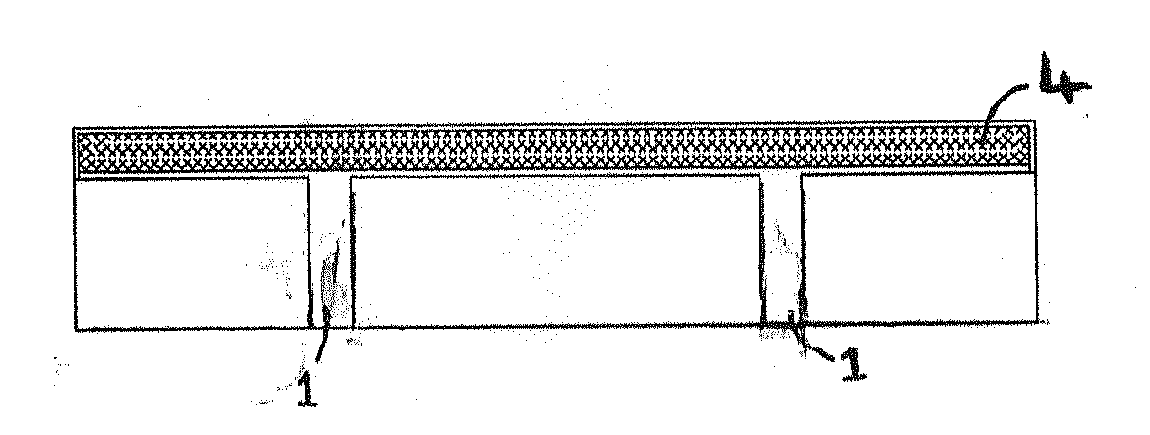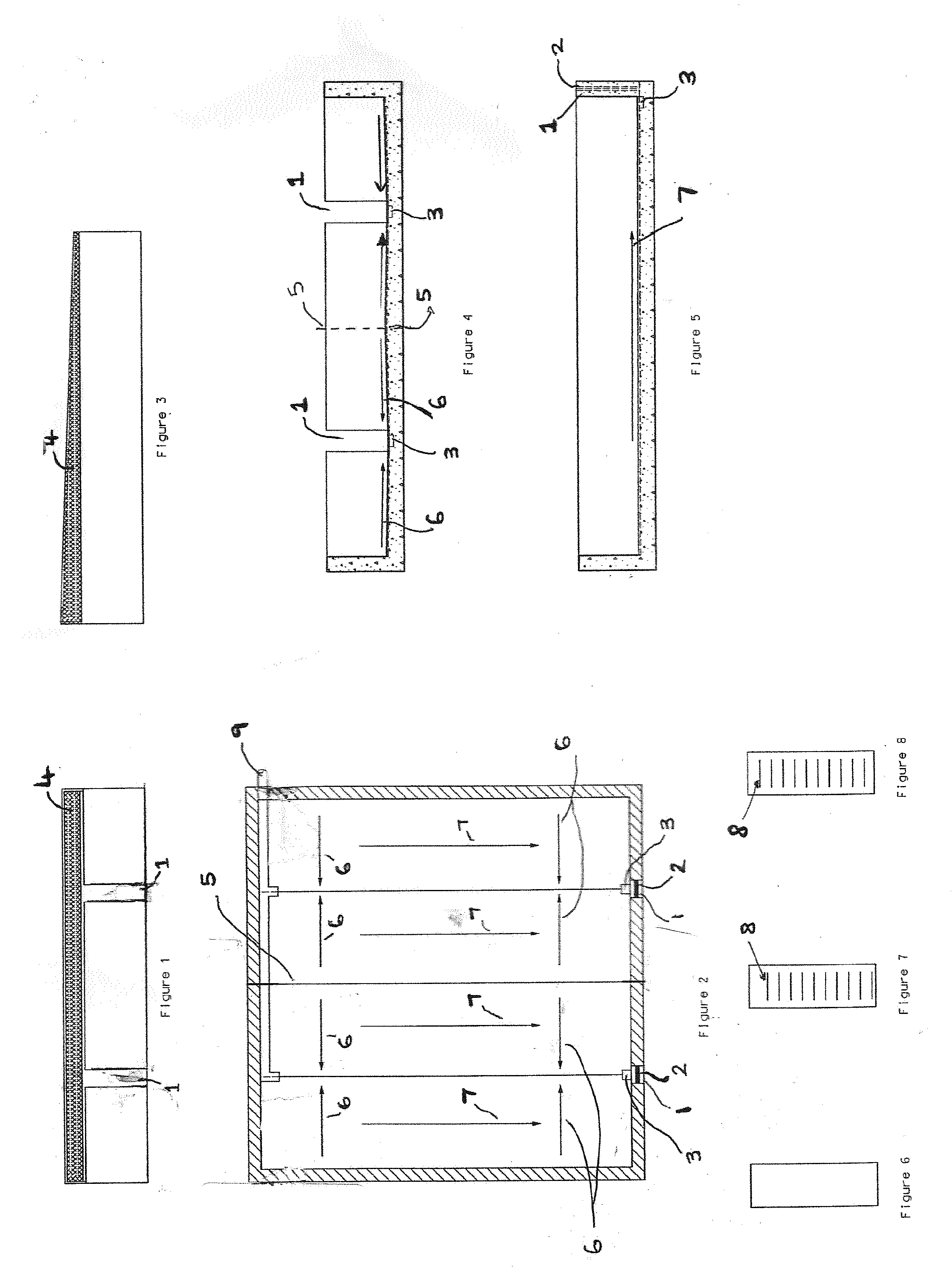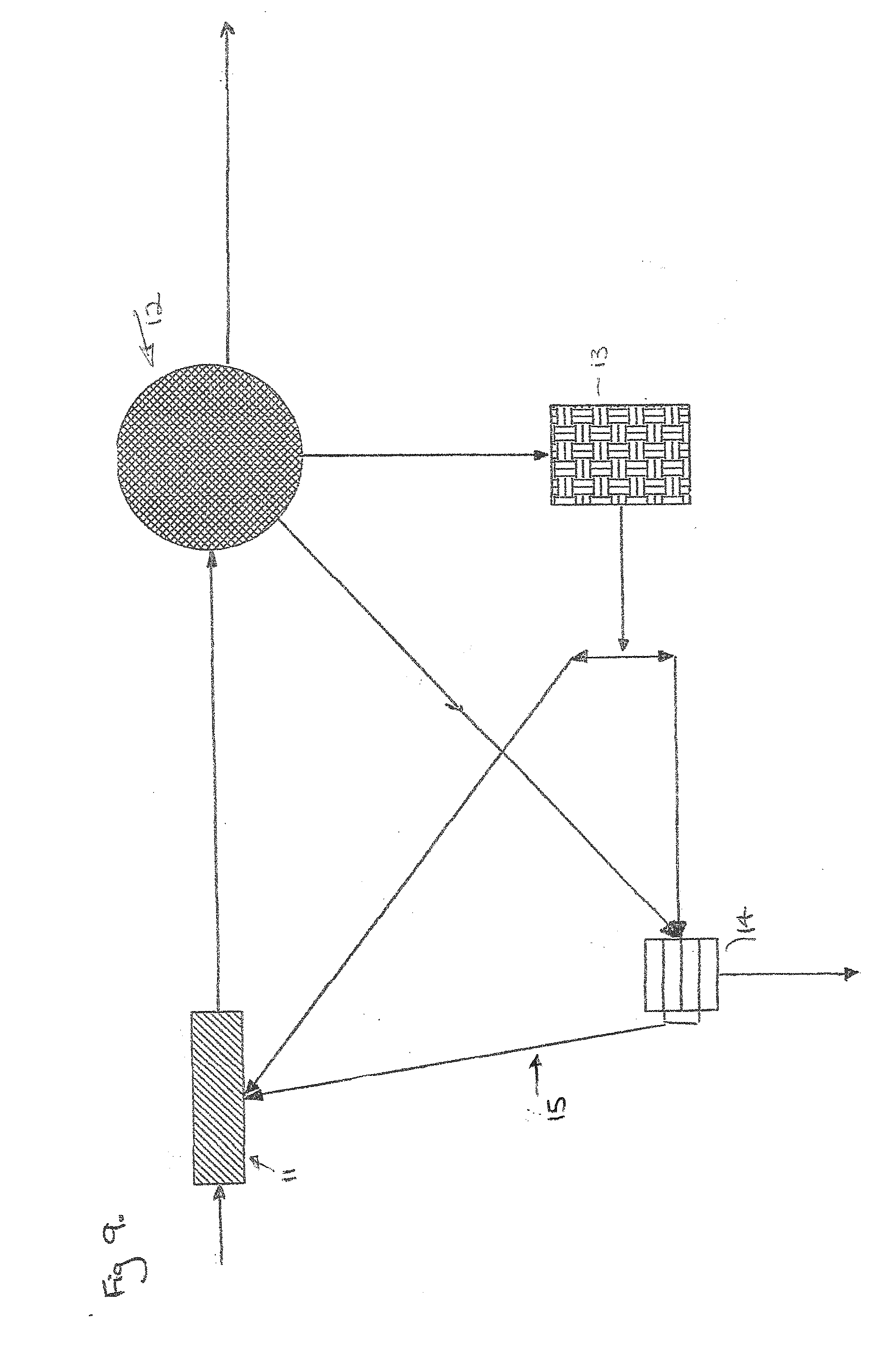Sludge drying beds
a technology of sludge drying and sludge, which is applied in the direction of energy-based wastewater treatment, sedimentation separation, and separation processes, can solve the problems of increasing sludge generation, increasing sludge generation, and increasing the cost of sludge transport/hauling, and the cost and economics of current sludge transport/hauling are also significan
- Summary
- Abstract
- Description
- Claims
- Application Information
AI Technical Summary
Benefits of technology
Problems solved by technology
Method used
Image
Examples
Embodiment Construction
[0032]The design of the sludge drying bed provides for ease of operation and is determined by the treatment plant size. The sludge drying bed capacity is determined by such factors as: volume of sludge added, percent solids, and character; the temperature of the beds; the degree of solids reduction required; method of sludge disposal and the size of the plant. For operational purposes, the depth of the sludge placed on the drying bed may increase or decrease based on the percent solids content. Provision must be made to maintain sufficient continuity of service so that sludge may be dewatered without accumulation beyond the storage capacity of the beds.
[0033]The sludge drying beds are modular in design and may be scaled up by positioning the preferred embodiment of the sludge drying beds adjacent to each other, which may optionally be separated with or without a dividing wall, to cater for increased sludge volumes from domestic and commercial sewage and wastewater during the design ...
PUM
| Property | Measurement | Unit |
|---|---|---|
| Length | aaaaa | aaaaa |
| Length | aaaaa | aaaaa |
| Length | aaaaa | aaaaa |
Abstract
Description
Claims
Application Information
 Login to View More
Login to View More - R&D
- Intellectual Property
- Life Sciences
- Materials
- Tech Scout
- Unparalleled Data Quality
- Higher Quality Content
- 60% Fewer Hallucinations
Browse by: Latest US Patents, China's latest patents, Technical Efficacy Thesaurus, Application Domain, Technology Topic, Popular Technical Reports.
© 2025 PatSnap. All rights reserved.Legal|Privacy policy|Modern Slavery Act Transparency Statement|Sitemap|About US| Contact US: help@patsnap.com



